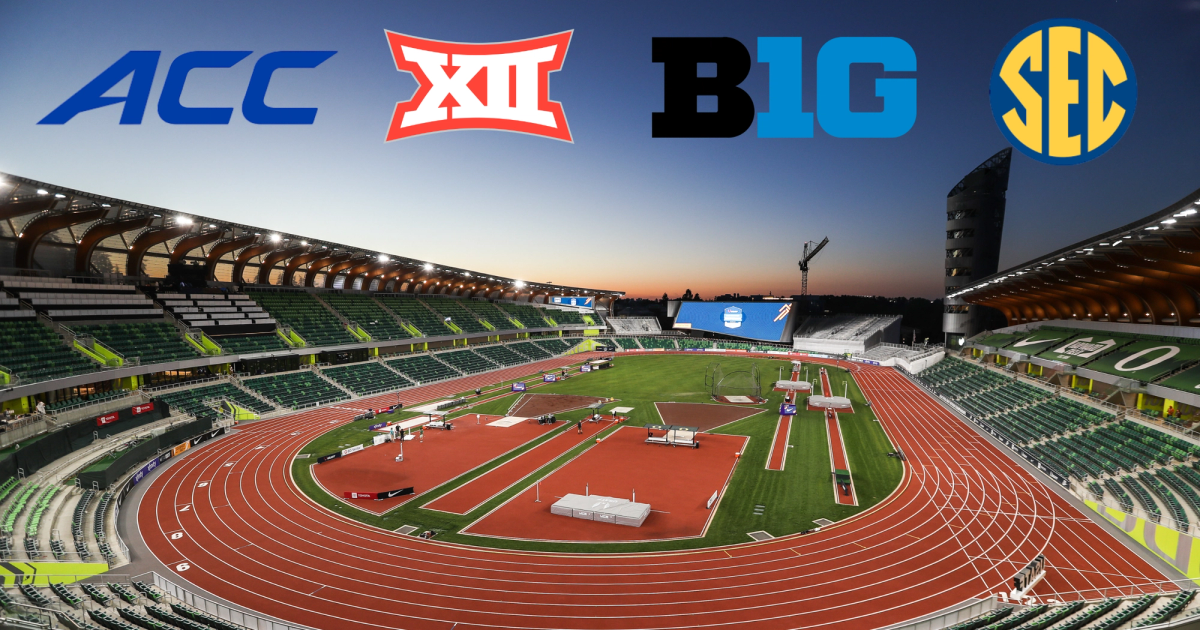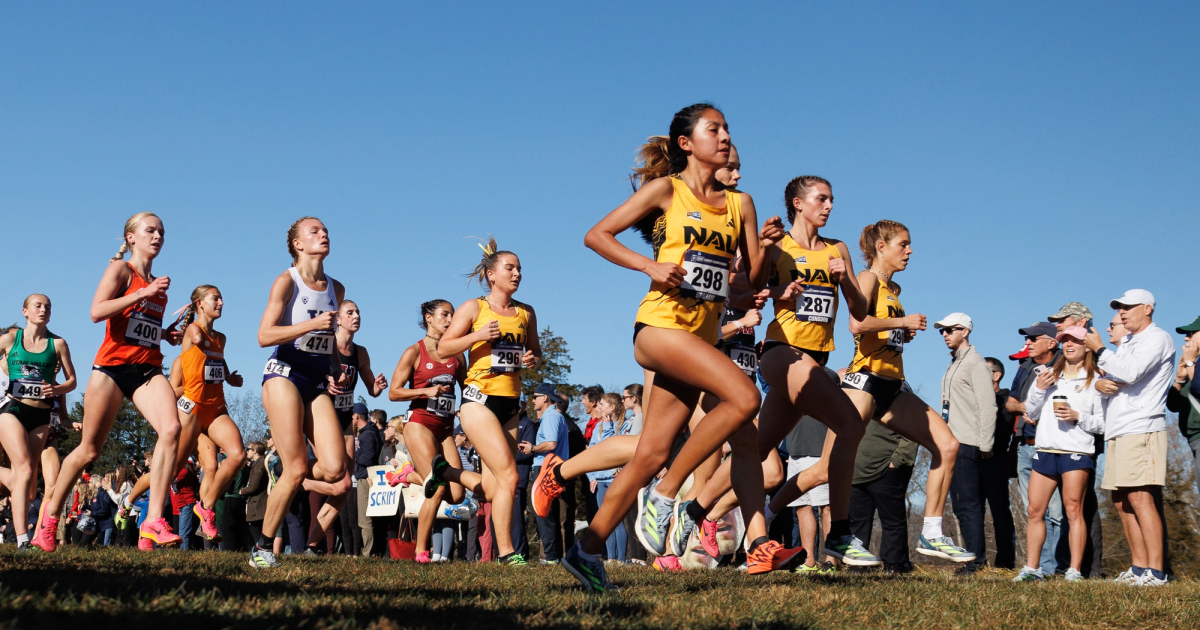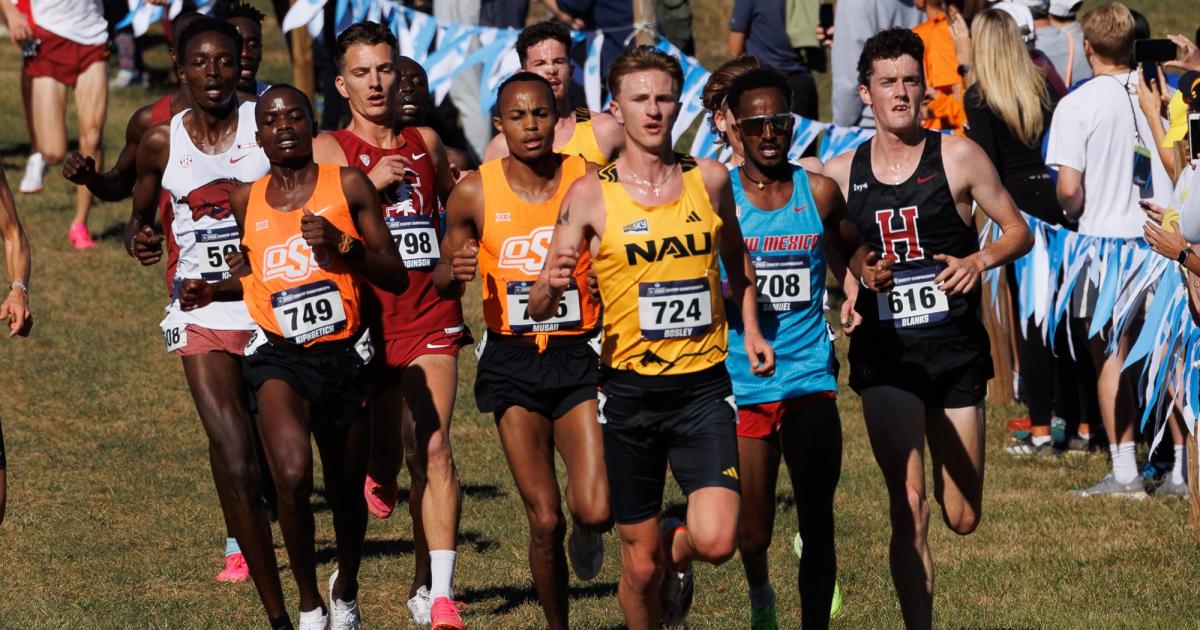By Audrey Allen
August 28, 2024
With the majority of semester-based schools getting back in session this week while quarter-system kids are getting another month at summer camp, the NCAA cross country season is just around the corner. But this year will look a bit different than the past as 2024-2025 will see big changes to the landscape of collegiate athletics.
Is the Pac-12 now the Pac-2? Does that make the Power Five the Power Four? And how much larger will the Big Ten and the Big 12 get before they finally update their names? These shifts might be driven by football’s media dollars, but every Division I team sporting a new conference logo on their jerseys is feeling the impact.
Let’s break it down:
– SEC: Now 16 schools with the additions of the Oklahoma and Texas
– Big Ten: Now 18 schools with the additions of UCLA, USC, Oregon and Washington
– Big 12: Now also at 16 schools with the additions of Arizona, Arizona State, Colorado and Utah
– ACC: Now a whopping 18 schools with the additions of Cal, Stanford, and SMU
You may be thinking that these conference changes don’t mean much for cross country and track and field. After all, outside of conference championships and the postseason, meets are just a hodgepodge gathering of schools without any particular regional organization. (Spare a thought for the west coast soccer or a volleyball student-athlete that will be flying hella far to the Midwest or Eastern seaboard every in-season week to compete head-to-head with another school). Plus, qualification to nationals is still based on geography, not conference.
But I’m here to reassure you that the conference realignment will have its fair share of shaking things up. While some of the most storied rivalries in college athletics like UCLA-USC or Oklahoma-Texas are sticking around, it’s fun to speculate if this conference shuffle will reignite old feuds or even spark new ones.
As you can probably figure out, the biggest impact will be on conference championships. More competition on the conference level means that teams that want to win their league title will have to race all their top stars head-to-head earlier than, say, regionals or nationals. Assuming the XC powerhouses are motivated to go all-in on conference performances (a big “if”), we’ll get a legitimate preview of how, say, Notre Dame squares up against Stanford a few weeks out from cross country nationals.
And for the 10 schools ditching the Pac-12 for Midwest or Atlantic-based conferences, there’s some collateral damage. No more training through the winter after cross country or sending a skeleton crew to the MPSF Championships! You’ve got an honest-to-goodness indoor conference championship now, which could put a new emphasis on the winter season for those teams.
And the conference carousel isn’t just a fun ride for the athletes – fans are in for some quality entertainment, too. Rivalries that have been on a decade-long hiatus are back, like Texas-Texas A&M in the SEC and BYU-Utah in the Big 12. We also no longer have to wait until November, March, and June to see the heavy-hitting teams go head-to-head. We may not see a return of the true dual meet in track – at this point largely dead, but once the beating heart of NCAA track and field – but we’re sure to get some de facto ones in the forms of conference-championship grudge matches.
Circling back to Texas… Given UT’s esteemed “track” record, it’s funny to think that Texas wasn’t already in the SEC. But now that the Longhorns have found their new home, they’re undoubtedly going to make some noise in the South. Their move leaves a Texas-sized hole in the Big 12 picture moving forward, but their neighbors to the west, Texas Tech, have shown over the last few years that they’re more than capable of filling it.
Meanwhile, the already-stacked ACC is going to become even more of a distance powerhouse with Stanford added to the mix against top contenders like UNC and Syracuse on the men’s side, coupled with intense competition among NC State, Notre Dame and Stanford on the women’s side.
From a track perspective, West Coast comrades USC and Washington are bringing their competitive pedigrees to the men’s field of the Big Ten, with a fresh third-place NCAA outdoor finish and a Pac-12 title to their names, respectively. The Oregon and Washington women are ready to leave the Pacific branding behind and aren’t afraid of the new travel (distance) as they both scored the highest of the Big Ten players at last year’s cross country championships. Then, on the track side of things, Oregon and USC are looking to assert their P5P4 status and shake things up in the Midwest.
And with additional changes likely coming soon when new roster size limits and revenue-sharing models get implemented next year, the changes for collegiate runners, jumpers, and throwers are only likely to get more dramatic in the coming months. We’ll spend a little more time unpacking those potential impacts in upcoming issues as well.
So whether you’re upset about finding a new network to watch your favorite college athletes compete, or are contemplating the idea that the NCAA might become one giant superconference in the near future (which feels even closer in track than some other sports) – there’s no more reminiscing over the past, more geographically-coherent era of college sports. The school year of major conference realignments has arrived, and the NCAA has a whole new look to get familiar with.

Audrey Allen
Audrey is a student-athlete at UCLA (Go Bruins!) studying Communications with minors in Professional Writing and Entrepreneurship. When she’s not spiking up for cross country and track, she loves being involved with the media side of the sport. You’ll often find her taking photos from the sidelines or designing graphics on her laptop.




